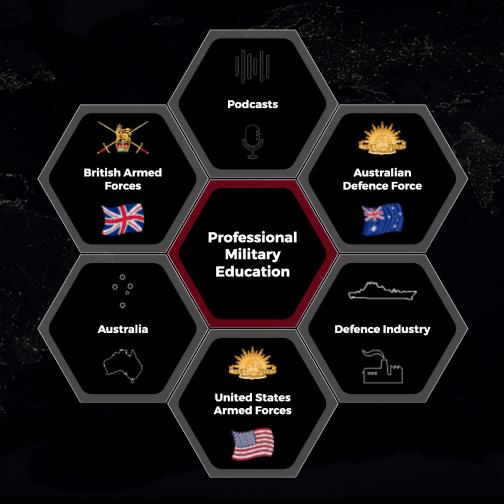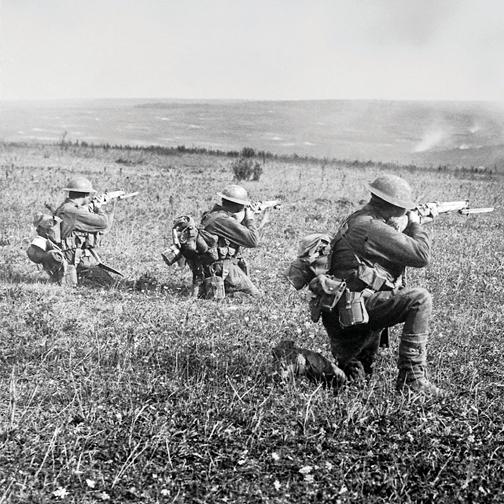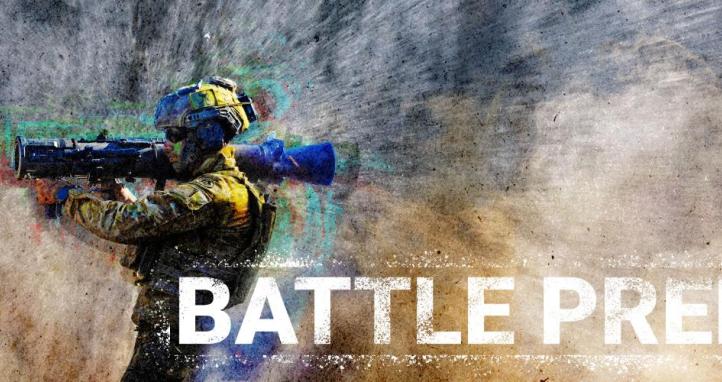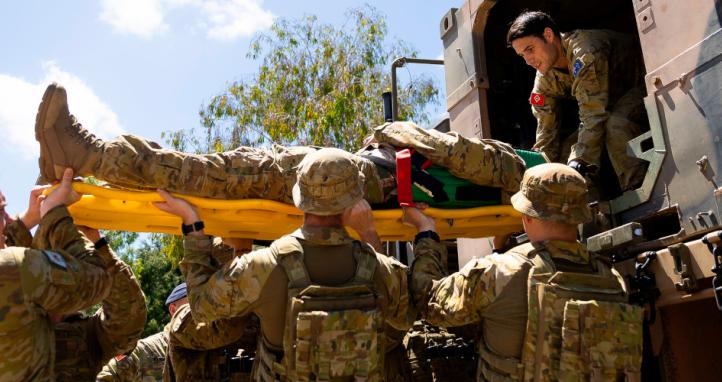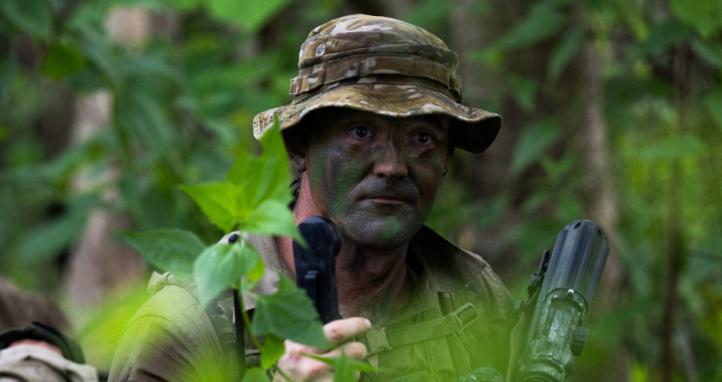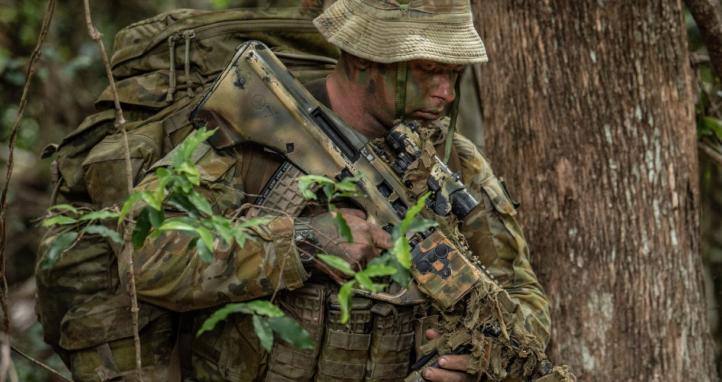You can find part 1 here.
Reconnaissance Strike Tactics (RST) for Distributed Operations in Australia’s Primary Area of Military Interest (Part 2)
The second part of this discussion paper examines how RST could be applied by deployed ADF JTFs operating in the archipelagic environment of the inner island chain from the Flores Sea across to PNG and the Solomon Islands. It also considers the key capabilities, characteristics and posture that would need to be resident in the JTF for executing RST. The final discussion will conclude with core functions and capabilities that require further investment to ensure the ADF can evolve a successful approach to RST.
Application of RST in the Inner Archipelago
The ADF is not force structured at 2% of GDP funding to compete with a major nuclear-armed power. Hence, our ANZUS alliance relationship with the US to attain a level of deterrence and security against nuclear-armed threats. It may be logical to expect that under any regional conflict involving an adversary major power that the US would value Australia’s geography to disperse its forces from bases such as Guam, and provide a “southern anchor’ for further flows of coalition forces into the theatre. In this construct, the ADF’s force structure is better suited to protecting our immediate northern maritime approaches to secure the coalition anchor and release US JTFs for the high-intensity operations required for the defence of Japan and the Philippines.
Current ADF force structure limitations require a clear-eyed assessment of how such a strategic maritime denial effect in our inner northern approaches could be achieved under a “fight tonight” requirement to late 2027 when some commentary from US INDOPACOM notes a strategic crisis could develop in the Straits of Taiwan. Current capability limitations in supply and replenishment at sea, capacity of Vertical Launch Systems (VLS) in the surface fleet, combined with Integrated Air and Missile Defence (IAMD) vulnerabilities across the ADF mean operations by RAN Surface Action Groups (SAGs) and amphibious assets face heightened operational risk. Major fleet assets such as AWDs may need to be held back to reduce operational risk from multiple high-speed missile threats resident in the adversary’s A2/AD system and use their VLS to support defensive RST being mounted from the inner archipelago.
The role of the RAAF in implementing archipelagic RST is principally air combat to secure specific air control windows, maritime domain awareness, Joint battle management, and delivering precision strike weapons to long-range targets from operating hubs in the inner island chain and northern Australia. The Army’s remit is to support distributed JTF operations by using its Amphibious Battle Groups (ABG) to secure key air and port infrastructure in the inner islands and use these as hubs from which to project forward sub-unit (Recon-Strike Combat Team) spokes. These forward Recon-Strike Combat Team (RSCT) spokes could be distributed to project an area denial effect through extended UAV surveillance and employment of land-based Precision Guided Weapons (PGW), cue JTF or long-range strike assets from the hub, reduce Electro-Magnetic (EM) signatures and logistic footprints, and complicate adversary targeting.
A series of forward RSCT spokes, supported by logistics, surveillance, and strike platforms operating from the hub and JTF, could generate a networked, hedgehog-type denial effect over a wide area by facilitating Joint Fires in their respective Engagement Areas (EAs) within the inner archipelago. This interlocking defensive hub and spoke posture within the inner islands would need to be established by rapidly concentrating amphibious assets prior to the operating area becoming occupied in strength by an adversary, as this situation could force a high-risk series of deliberate, large-scale amphibious assaults that defeat the purpose of employing RST and increase operational risk to key platforms.
Core Capabilities in the JTF for executing distributed RST in the inner archipelago
For the purposes of this discussion paper, the core JTF capabilities needed for RST are extant and publicly declared for Defence acquisition or in development by Australian industry. Core capabilities for the JTF in the “fight tonight” recon-strike complex revolve around the three key functions of ISR, Strike, and Information Management. These core capabilities include airborne and space-based ISR sensors, multi-domain long-range precision guided strike weapons and platforms, autonomous armed systems, Electronic Warfare (EW) effectors, and special forces. These capabilities are integrated through critical information systems such as battle management, AI-enabled decision-support tools, and multi-domain targeting analytics.
Key characteristics of the JTF conducting distributed RST in the inner archipelago
In the context of this discussion paper, there are certain key characteristics of the distributed JTF operating recon-strike missions in the archipelagic environment. These include, but are not limited to:
- The JTF forward HQ hub can only be lightly IAMD protected by NASAMS and/or AWD so passive defence measures are critical to its survivability. This hub enables projection of long-range strike assets in support of dispersed combat team nodes that form the spokes of the dispersed archipelagic recon-strike complex.
- Rapid force concentrations at ABG level for smaller-scale amphibious missions to secure operating hubs and spokes is critical in early operational phases to extend the recon-strike envelope. This retention of the initiative is preferred over deliberate amphibious assaults involving the entire resources of the JTF should adversary forces be given the opportunity to establish or reinforce contested nodes in the inner archipelago.
- Distributed strike systems, collaborative autonomous surveillance networks, and independent combat teams characterise the battlespace of the PAMI.
- RSCT spokes and SF elements are deployed forward to project and extend organic ISR effects, and cue JTF precision strike assets.
- UAV, Counter-UAV, Unmanned Surface Vessels, land-based precision strike guided weapons, ISR and Command and Control (C2) links, and a Common Operating Picture (COP) of the distributed JTF are inherent at RSCT level.
- Highly Integrated ISR sensors and precision strike systems at tactical and operational levels within the Joint Battle Management System (JBMS).
- Targeting excellence and rapid decision-support to the commander are the key characteristics of the deployed JTF HQ and its staff.
- Dislocation, degradation, and destruction of an adversary’s force projection capabilities are critical defeat mechanisms in the RST to achieve a maritime denial and deterrence effect.
- Highly evolved signature management to enhance combat team and hub survivability.
- Light logistics pulled forward to rapidly sustain forward hubs and the RSCT sensor/strike spokes.
- Certain platforms should be capable of performing multiple roles. The LHD should have capacity to deploy and operate squadrons of air and sea drone systems. The C-17 can deploy autonomous sea mines and Littoral Manoeuvre Vessels of the ABG will need to be work-horses covering insertion, extraction, and logistic roles. Deployable High Mobility Artillery Rocket Systems (HiMARS) should be configured to fire a variety of precision missiles depending on their role and location within the recon-strike complex. Larger domestically produced dual-role autonomous sea vehicles could enhance logistic support for distributed RSCTs and carry a removable Naval Strike Missile (NSM) package for maritime surface attack. The new General Purpose Frigates should have the ability to perform limited Anti-Submarine Warfare (ASW) missions and mine-laying tasks in addition to having a Vertical Launch System (VLS), Tomahawk Land Attack Missile (TLAM), and NSM launch capability as part of adding value to the recon-strike system and an area denial effect.
Further Investments in Key RST Resources
The ADF has previously excelled at deploying high-performing HQ elements on military operations. The Special Operations Command and Control Elements (SOCCE) deployed to Afghanistan by the Special Operations Task Group (SOTG) were highly evolved, dynamic targeting-centric teams fusing ISR data and information to achieve a decapitation defeat mechanism on high-value individuals within the Taliban leadership. This type of dynamic, integrated approach is necessary for the application of distributed RST by future ADF JTF HQ elements operating in the inner archipelago. A number of further investments may be considered to ensure prepared and capable JTFs.
Training. Investments in collective and individual training that enhance HQ targeting and decision-support functions are relatively simple and build on the highly professional base of current officer and NCO training continua. Major collective training and Command Post Exercises (CPX) should focus on the execution of RST by dispersed JTF HQ and their amphibious combat elements in the inner archipelago of Australia’s PAMI. This means a collective focus by leaders on mission-command principles and a habitual degree of comfort with independent action by dispersed unit and sub-unit commanders. However, investments in the key JTF HQ enabling systems, processes, and technologies that facilitate multi-domain ISR fusion, information management, targeting, and rapid decision-making require much more investment and prioritisation.
Capability acceleration. Capabilities that should be accelerated for the JFIB are the medium-range IAMD system and accompanying Joint Battle Management System fused with the full spectrum of ISR and strike assets. The provision of assured access to space-based services and surveillance assets should be strengthened as a capability enhancement priority.
Autonomous systems. Further investments are needed to ensure cheap, medium-range air, maritime drone, and autonomous surface vessel technologies are available down to RSCT level. These can be modest and simple rapid acquisitions from the Australian industrial base to improve ISR coverage of distributed force elements and provide resilience and depth to medium-range strike capabilities.
Game Changing Capability Investments. If a single game-changing platform could be added to the ADF recon strike complex it would be a long-range strategic bomber with stealth characteristics. Either the B21 Raider or B1-B. Instead of a fourth JSF squadron or six Future Frigates at an eye-watering $9 Billion each, one squadron of B21 bombers would provide a genuine strategic deterrent and massively enhance the strike component of RST. The staggering payload of a B1-B at 75,000 pounds of precision strike weapons combined with long-range means one platform alone could hold at risk multiple adversary force elements attempting to achieve joint access into the inner archipelago. Whether deploying precision guided missiles or laying autonomous sea mines, an area denial effect can be rapidly generated by a strategic bomber squadron. If the Ukrainians can use coastal land-based precision strike to destroy the Black Sea Fleet flagship Moskva, then a SF team operating in the approaches to the inner archipelago with a B21 Raider or B1-B on call becomes a potent strike asset and a genuine asymmetric complication for adversary planners.
International Engagement. This paper has previously noted that early access to key operating hubs in the inner archipelago is crucial to prevent adversary occupation or reinforcement. This access should be facilitated through clear ADF international engagement priorities with PNG, Indonesia, East Timor and the Solomon Islands. Ensuring ABG force elements are familiar with manoeuvre in this archipelagic operating environment and partnering with these security forces is fundamental to implementing RST in the future.
Research and Development. Priority R&D effort by the ADF is needed in the induction of AI/autonomous systems, and machine learning to increase the speed and tempo of the JTF OODA cycle. This starts with hoovering up all the hydrographic, electronic, littoral, and terrain analyses we have available on the inner archipelago and its surrounding maritime domain. Air, surface, and sub-surface approaches into the inner archipelago need to be understood in detail and available to the JTF and its planning staff. This baseline data provides a foundation for AI-enabled targeting analysis and prioritisation across all warfighting domains.
Conclusion
The ADF and US military forces have a degree of catching up to do in order to remain competitive with PLA efforts to inculcate RST into their warfighting doctrine and structures. Progress is steady and the key force structure ingredients exist in both militaries. With slightly more investment and commitment to RTS concepts and capabilities, the ADF could significantly advance its ability to implement the denial and deterrence objectives of the National Defence Strategy.
The next generation of junior military commanders will have unprecedented access to sophisticated precision strike capabilities under the ADF modernisation program. This generation of manoeuvre commanders will need to be as familiar with the employment of LRASM and JASSM-ER as part of siting a littoral recon strike engagement area as they are with the theory of grazing machine gun fire. The archipelagic terrain to Australia’s north is the new vital ground and key terrain for military operations. The next generational challenge for ADF junior leaders is to combine these geographic opportunities with the potency of new ADF capabilities in the proud tradition of the profession of arms.
